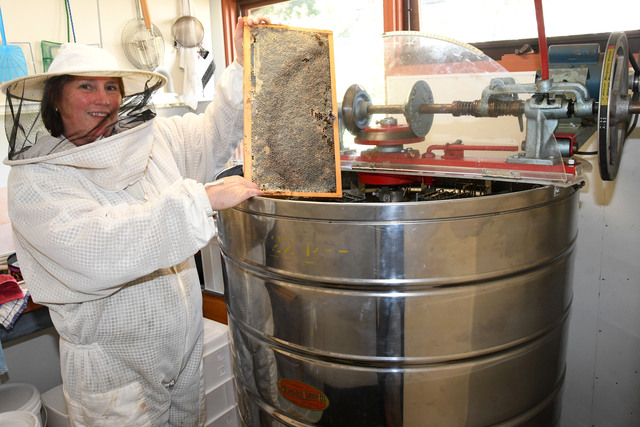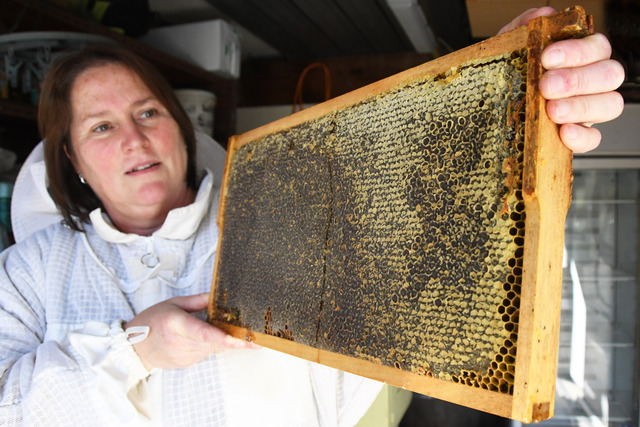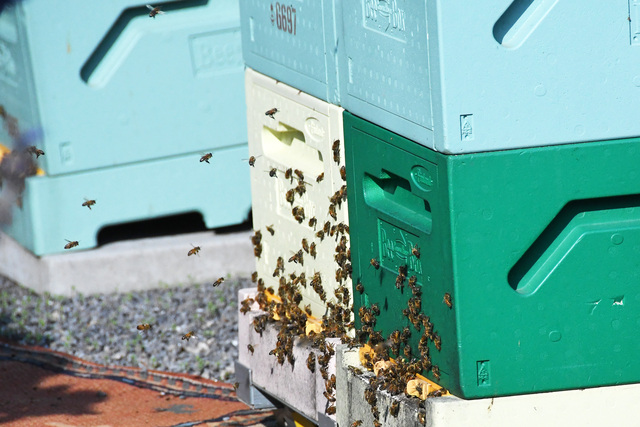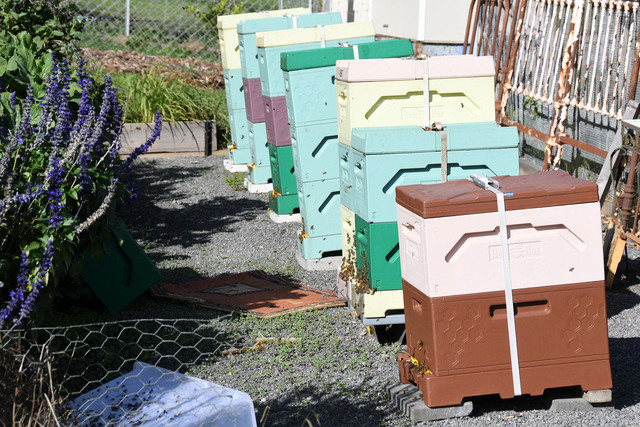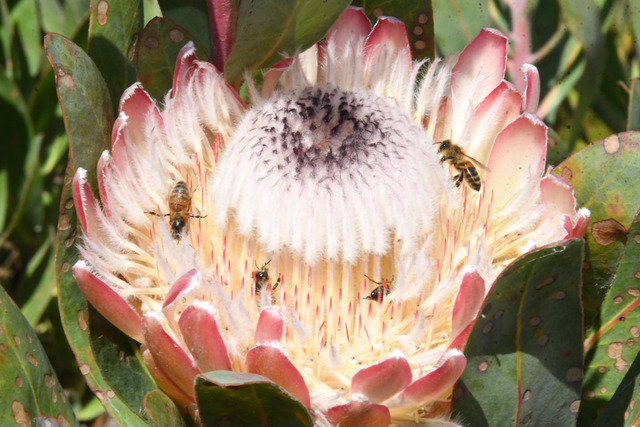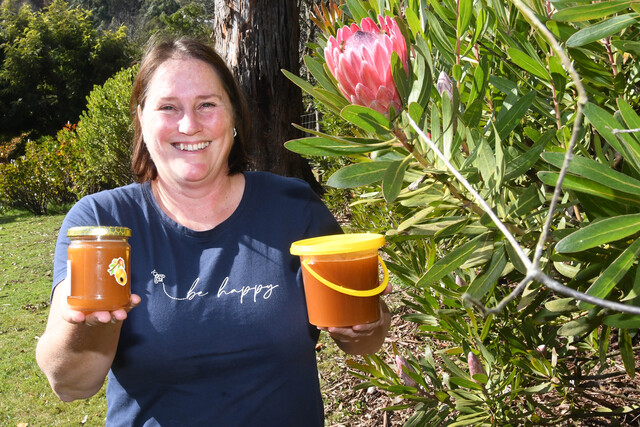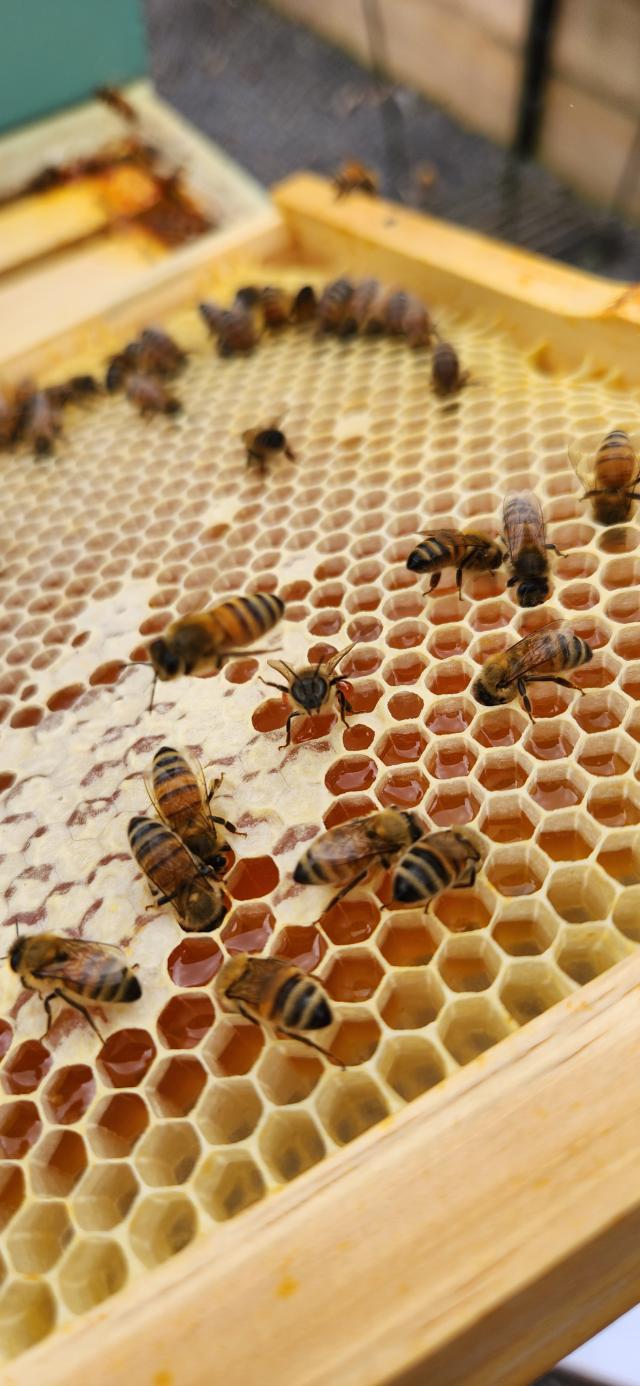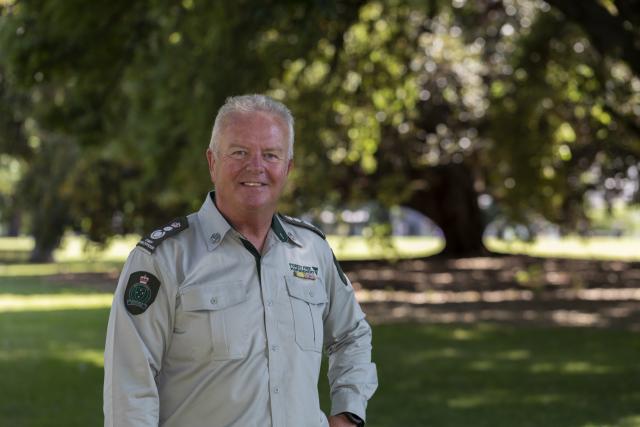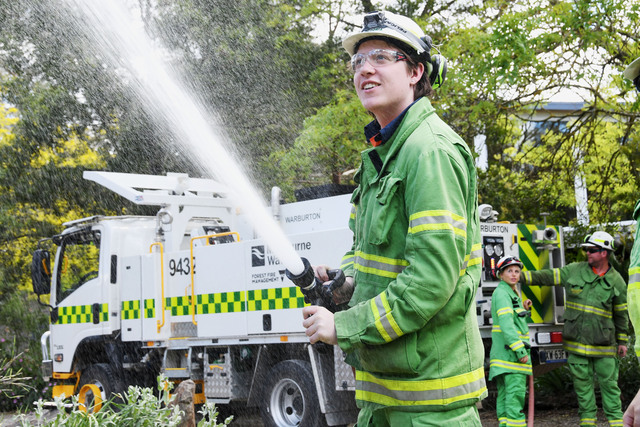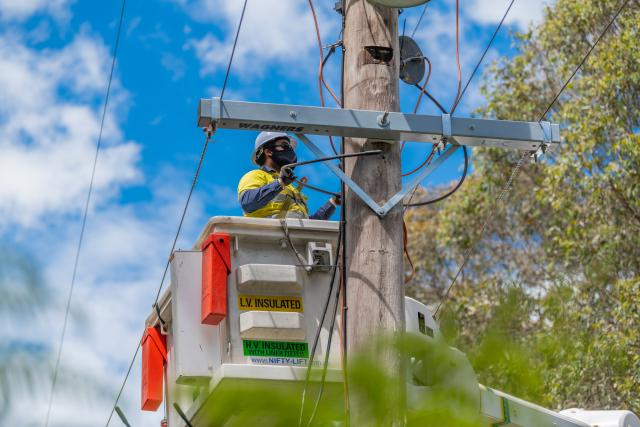PRECEDE: Nearly two-thirds of Australia’s agricultural production benefits from bee pollination. Beyond using bees in food production, a growing number of locals are sharing their love and knowledge in beekeeping. For World Bee Day on Monday 20 May, Star News journalist MATTHEW SIMS spoke to Emerald Regional Beekeeping Club member Kerry Graham about the growing popularity for the hobby in the region and the value of bees.
On a property along a tributary of Menzies Creek in Emerald, one of Australia’s key elements of its food production can be found buzzing around.
Hobby beekeeper and Emerald Regional Beekeeping Club member Kerry Graham hosts seven hives on her property and produces a small amount of honey.
The bees use both the pollen and the nectar at one of the many protea flowers found on the property, before returning to the hive and depositing it in a honeycomb cell, which is then capped with wax.
With each hive containing about 30,000 bees working at making honey and a hive’s queen laying about 2000 eggs a day, Ms Graham said managing a hive and then producing honey was a time-consuming task.
Another part of her process was freezing the honeycomb to protect and then extracting the honey.
However, instead of stripping the honeycomb completely, Ms Graham said she often returned the hollowed-out honeycomb and any leftover honey back to the hive.
“I give them their own honey back sometimes,“ she said.
“It saves them starting from scratch to build.
“It just gives them a little bit of fast-tracking.“
Ms Graham said out of a hive of 30,000 bees, the majority of the ’workers’ were female.
“The hive is run by a queen,“ she said.
“The boys are called drones and are only useful to breed and mate.“
Ms Graham said her beekeeping was only a hobby which began with one hive in an Officer housing block six years ago and had only become seven hives in the past 12 months.
“We’ve started with one hive and expanded,“ she said.
“We’re just interested in maintaining the hives so they can give us some honey which I give to family and friends.
Ms Graham said her and her partner Steve had no interest in becoming a commercial enterprise.
“My dad used to have bees in Shady Creek,“ she said.
“I’ve always had a fascination for bees.“
One memory which sprang to mind was stepping into the family home covered in a swarm of bees at only four years of age.
“I knew no better,“ Ms Graham said.
Once owning a pet shop in Warragul, Ms Graham said she has always had a love for nature and the hidden world of animals and insects.
“We’ve always had lots of animals around,“ she said.
Ms Graham said the importance of bees and other insects in pollination and broader food and plant production was often unseen and unknown by most people.
“We just step over them,“ she said.
“Every little bee or insect has an ability to pollinate a different type of flower.
“We’d lose a lot of our nature without bees and insects.“
A number of beekeepers continue to face increasing pressures from rising costs in managing pest and disease, severe weather events including bushfires, floods and droughts, and decreasing prices received for their honey, driven in part by competition from cheaper imported honeys.
Wheen Bee Foundation CEO Fiona Chambers said the benefits and uses of bees were varied.
“More than just producing honey, bees and beekeepers provide a vital yet often unrecognised service to Australian agriculture,“ she said.
“At least 53 crops grown in Australia rely on pollination by insects to some extent – crops such as almonds, macadamias, avocados, apples, pears, berries, stone fruit, plus vegetables and canola.
“This pollination is provided by managed honey bees, along with native bees and other pollinators, which all contribute to improving yield and quality of these crops.“
Ms Chambers said while many people had some understanding of the importance of bees, most did not know the true extent to which we depend on bees for the food Australians eat every day.
“Most people know bees play a role in food production, but few know the sheer scale of their contribution,“ Ms Chambers said.
“Often when you sit down for dinner, the whole plate will have some link to bees.
“By buying 100 per cent Australian honey you are not only supporting Australian beekeepers but the many Australian businesses that rely upon them.“
Another issue concerning beekeepers across the country was the spread of the Varroa mite or Varroa destructor, an invasive parasite deadly to bees which was first detected in New South Wales in June 2022.
Ms Graham said the Victorian beekeeping community were preparing for incursions by varroa mite.
“It’s just about maintaining it,“ she said.
“We must learn to live with it.”
A number of Asia, Europe, the USA, South America and New Zealand have already dealt with populations of Varroa mite, with Varroa leading to a 30 per cent fatality rate across a hive.
“We’ve got to control it,“ Ms Graham said.
Since moving to Emerald about four years ago and joining the Emerald Regional Beekeeping Club, Ms Graham said the group had significantly grown from about 30 members to when she first joined to about 75 members currently.
“We’re probably one of the strongest growing clubs in the region,“ she said.
“We’re here to have fun and we’re hear to learn.”

